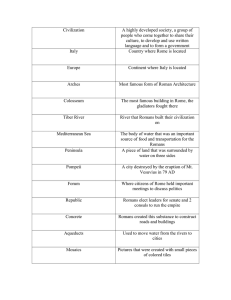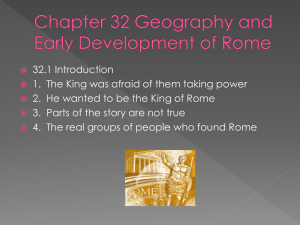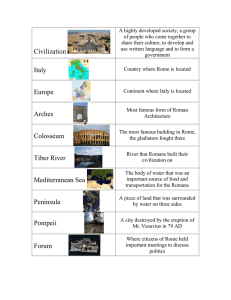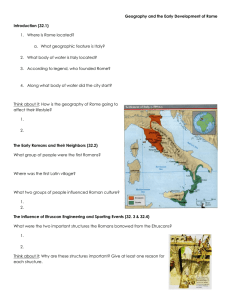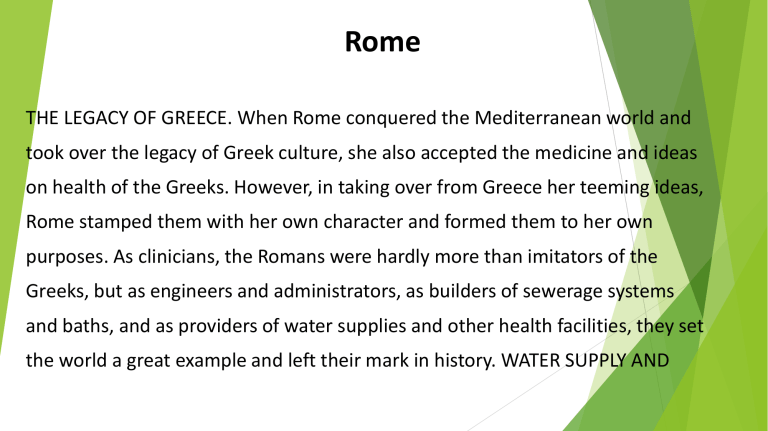
Rome THE LEGACY OF GREECE. When Rome conquered the Mediterranean world and took over the legacy of Greek culture, she also accepted the medicine and ideas on health of the Greeks. However, in taking over from Greece her teeming ideas, Rome stamped them with her own character and formed them to her own purposes. As clinicians, the Romans were hardly more than imitators of the Greeks, but as engineers and administrators, as builders of sewerage systems and baths, and as providers of water supplies and other health facilities, they set the world a great example and left their mark in history. WATER SUPPLY AND SANITATION. According to Strabo, because springs and streams of pure water were abundant, the Greeks did little to bring water supplies from a distance to their cities, and it was left to the Romans to introduce a systemof aqueducts and organized water supply. This statement is not entirely correct and requires qualification. The Romans possibly learned from the Etruscans, who knew how to transport water and exploit this resource. Nevertheless, taking into account levels of technological development as well as the achievements of their predecessors, the Roman system of water supply is unparalleled in history. All ancient cities relied to some extent on wells and rainwater cisterns for their water supply. At an early date, a number of Greek cities undertook to supplement these supplies from outside sources.Sometime in the sixth century B.C., water was brought into Athens from hills outside to augment the city supplies. Excavations at Olynthus dating from the fifth century B.C. have water-supply system in which the water was brought from a mountain 10 miles away and piped to bathrooms and a public fountain within the city. Even closer to the Roman practice was the system developed by the city of Pergamon in Asia Minor about 200 B.C. In this instance, an aqueduct was installed on true hydraulic principles. The source ofsupply was a high-level reservoir at a height ofabout 1220 feet on Mount Hagios Georgios, whence the water was carried over intervening lower ground to a cistern 369 feet above sea level. Other Greek cities also developed systems of this type. However, even when these achievements are accorded due recognition, there is no doubt that the Romans far outstripped their forerunners. Servant who could proudly boast that by his labors he had not only made Rome cleaner and its air purer but also removed the causes of disease, which previously had given the city a bad reputation.
